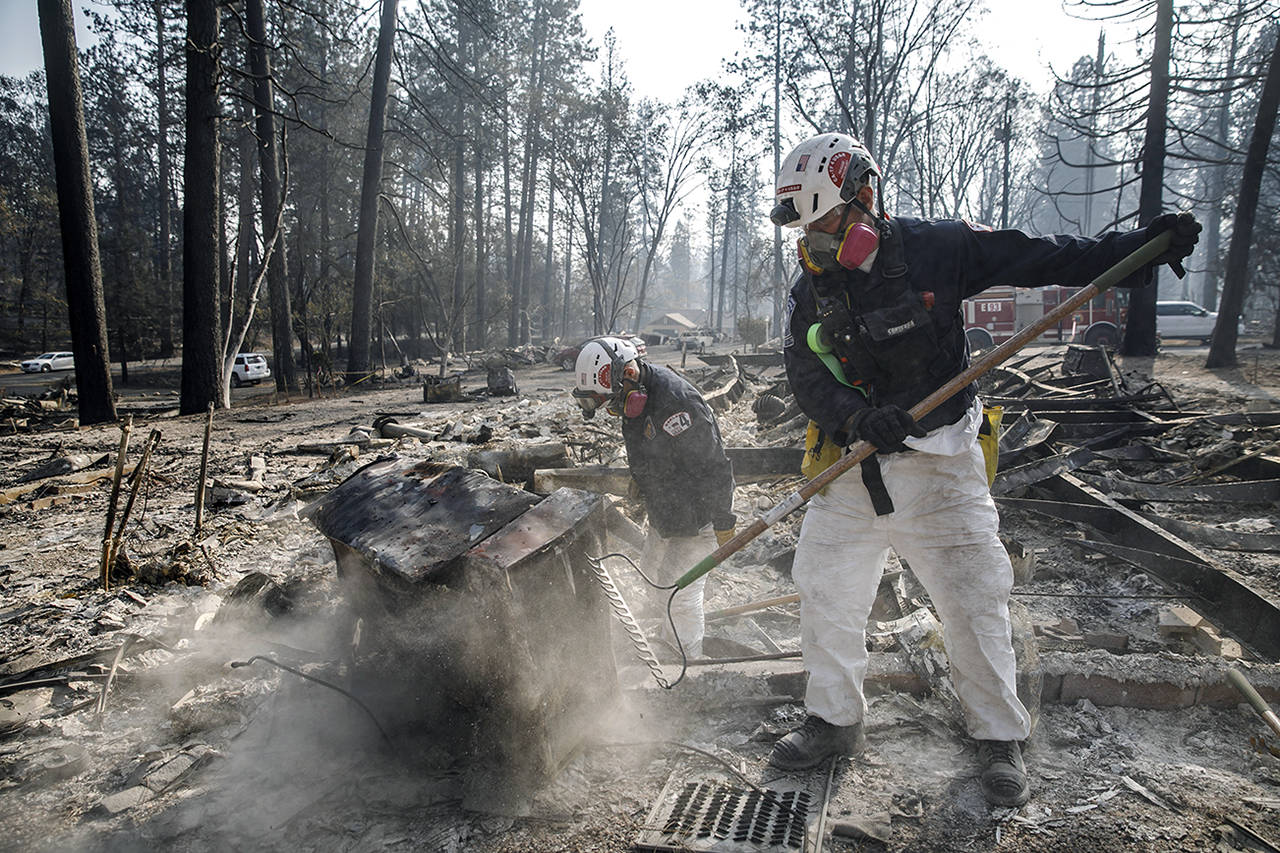CHICO, Calif. — The first job was to contain the California’s deadliest and most destructive wildfire. The second is to deal with what it left behind.
With more than 17,000 structures destroyed by the Camp fire, authorities will soon begin a cleanup that will test their ingenuity like never before: removal of an estimated 6 to 8 million tons of toxic rubble, soil and concrete strewn across 150,000 acres of mountain terrain, an area roughly the size of Chicago.
If all goes according to plan, what is expected to be the most expensive cleanup campaign in state history will be completed within six months to a year, allowing some displaced Paradise residents to begin rebuilding their homes by summer, said Sean Smith, state debris removal coordinator.
“We still have some creative work to do,” Smith said, “but I’m pushing hard to get that debris off the ground in time for people to start rebuilding in optimal weather.”
The project will be managed by the U.S. Environmental Protection Agency, with help from the U.S. Army Corps of Engineers and state and county authorities, as well as thousands of contract workers.
It will begin in a week or two, Smith said, when certified crews arrive to assess levels of hazardous and carcinogenic materials such as lead, asbestos, pesticides, herbicides and propane tanks on a lot-by-lot basis.
In January, fleets of contracted bulldozers, dump trucks, cranes and track hoes with mechanical jaws at the ends of 30-foot hydraulic arms will swarm the narrow mountain roads of the Sierra foothills city, about 10 miles east of Chico.
Burned concrete and metal including vehicles will be taken to a railyard in Chico and later transported to a recycling center.
“The debris will be hauled in trucks lined and covered with heavy plastic to ensure containment of the materials while they are in transit” to seven different landfills as far as Kettleman City, about 300 miles to the south, said Bryan May, a spokesman for the California Governor’s Office of Emergency Services.
Landfills in the immediate vicinity of Paradise and neighboring mountain communities won’t be burdened by the federal cleanup, leaving them available to those who live in the area, officials said.
The cost of excavating and removing Camp fire debris is expected to far surpass the $1.3 billion spent cleaning up after the Tubbs fire of 2017 in the Santa Rosa area, the second-most destructive wildfire in California history.
That fire destroyed more than 4,600 homes, many of them in the city of Santa Rosa, and produced more than 2 million tons of toxic debris, which overwhelmed regional landfills already brimming with rubble from a series of earlier fires, Smith said.
The Federal Emergency Management Agency will fund 75 percent of the effort, with the rest paid for by the state Governor’s Office of Emergency Services, officials said.
Authorities have announced that their targeted searches for human remains had ended, leaving the fatality count at 88, with 126 still missing. After a three-week evacuation, some residents are being allowed to return to neighborhoods that escaped the worst of the blaze.
It is yet to be determined when all residents will be allowed to make that grim pilgrimage back to their neighborhoods to examine the destruction and see if anything is salvageable.
The damage left behind is not just on the ground, as federal scientists begin coming to terms with the staggering toll of California’s 2018 fire season on the Earth’s atmosphere.
Wildfires statewide emitted roughly 68 million tons of carbon dioxide, or about 15 percent of all California emissions, according to a U.S. Geological Survey study released Friday.


